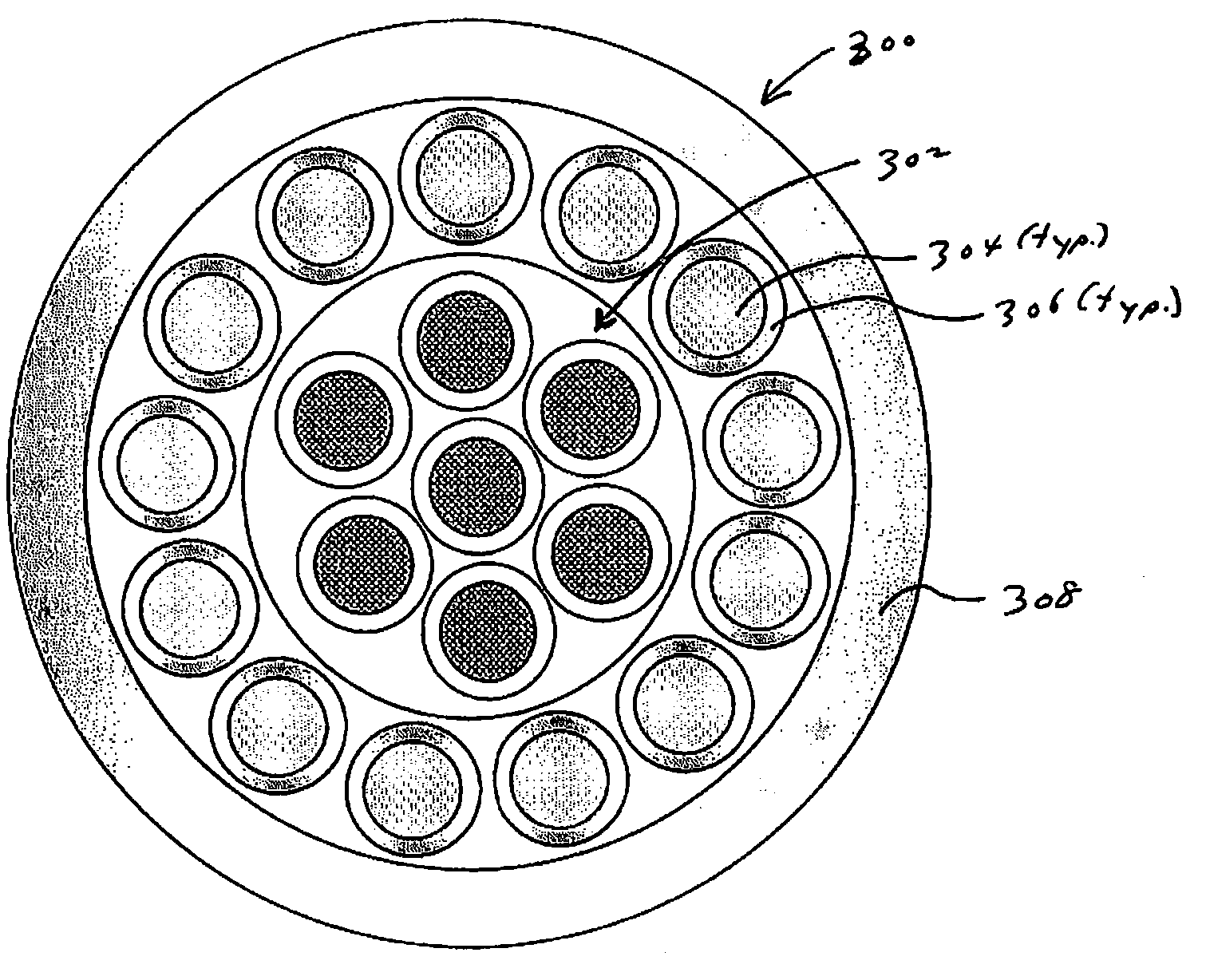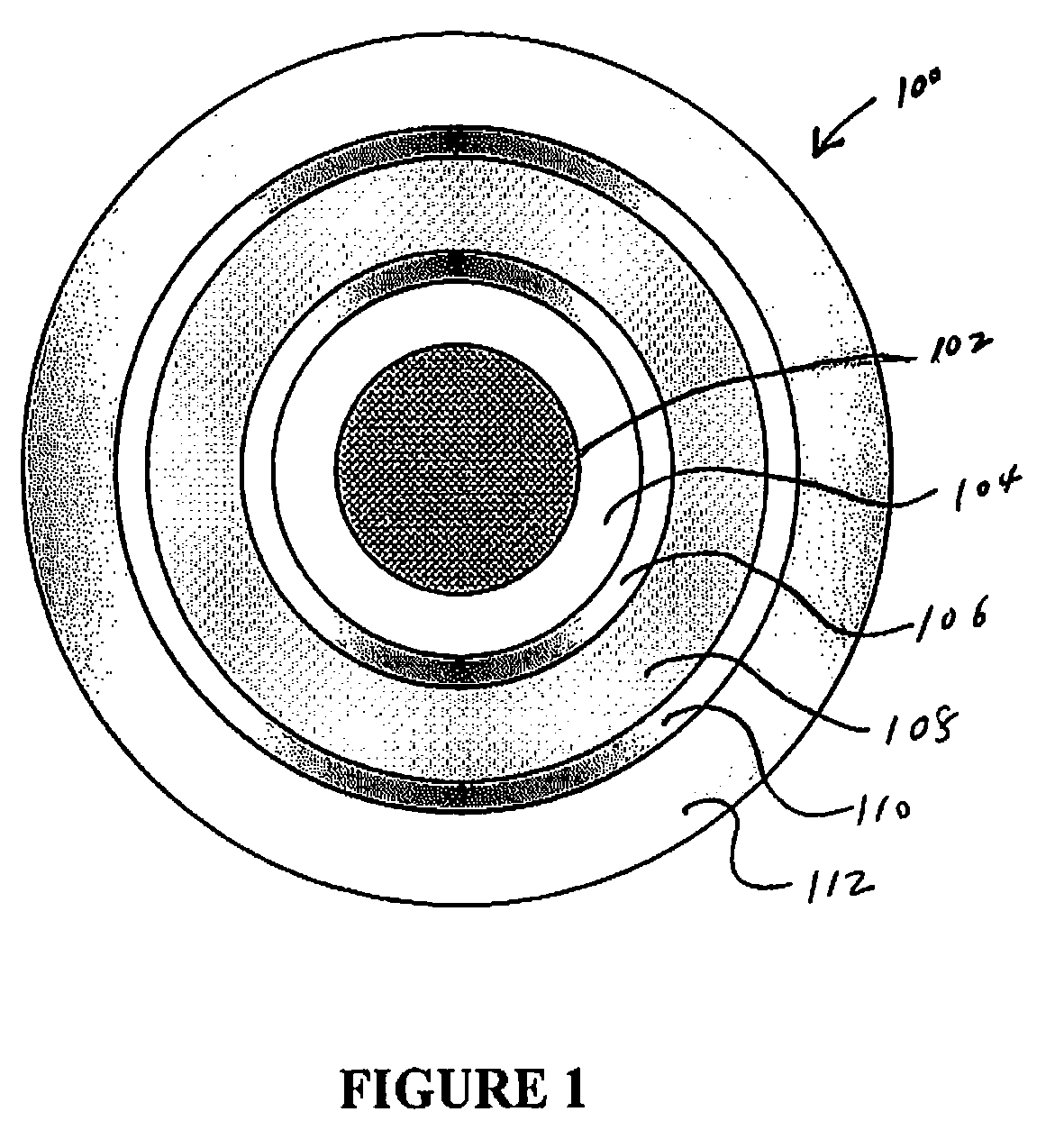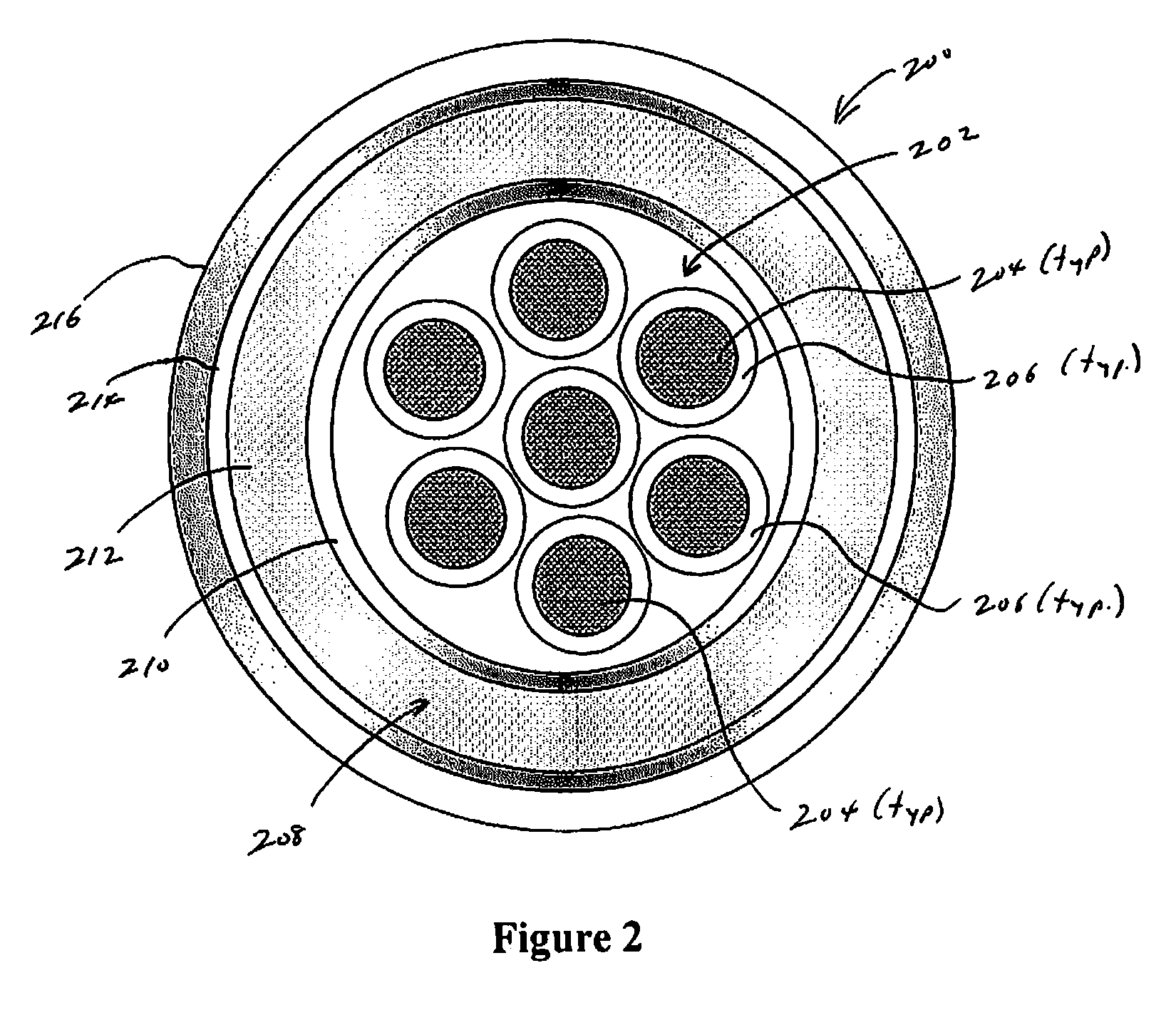Downhole cable
a cable and cable body technology, applied in the field of cables, can solve the problems of high cost, unsuitable for certain applications, and not always well-suited to certain applications, and achieve the effects of reducing the cost of cable installation
- Summary
- Abstract
- Description
- Claims
- Application Information
AI Technical Summary
Problems solved by technology
Method used
Image
Examples
Embodiment Construction
[0012]Cables as described herein are configured to protect internal structures that may be detrimentally impacted by exposure to the downhole environment, by protecting such structures by at least two protective layers. In preferred embodiments, the structures to be protected will be housed in a protective tube housed within the protective outer sheath. In this circumstance, such structures as polymer fibers, including the above-referenced Zylon fibers provided in some downhole cables for strength and load-bearing capability, are protected by at least two different protective layers from exposure to gases or fluids within a wellbore. Thus, even if the outermost protective sheath becomes damaged, an additional protective layer exists between such polymer fibers and gases or fluids in the wellbore. This additional protective layer not only protects the fibers and other internal layers from the gases and other fluids, but also provides abrasion resistance in the event that the outer sh...
PUM
| Property | Measurement | Unit |
|---|---|---|
| temperatures | aaaaa | aaaaa |
| tensile strength | aaaaa | aaaaa |
| outer diameter | aaaaa | aaaaa |
Abstract
Description
Claims
Application Information
 Login to View More
Login to View More - R&D
- Intellectual Property
- Life Sciences
- Materials
- Tech Scout
- Unparalleled Data Quality
- Higher Quality Content
- 60% Fewer Hallucinations
Browse by: Latest US Patents, China's latest patents, Technical Efficacy Thesaurus, Application Domain, Technology Topic, Popular Technical Reports.
© 2025 PatSnap. All rights reserved.Legal|Privacy policy|Modern Slavery Act Transparency Statement|Sitemap|About US| Contact US: help@patsnap.com



